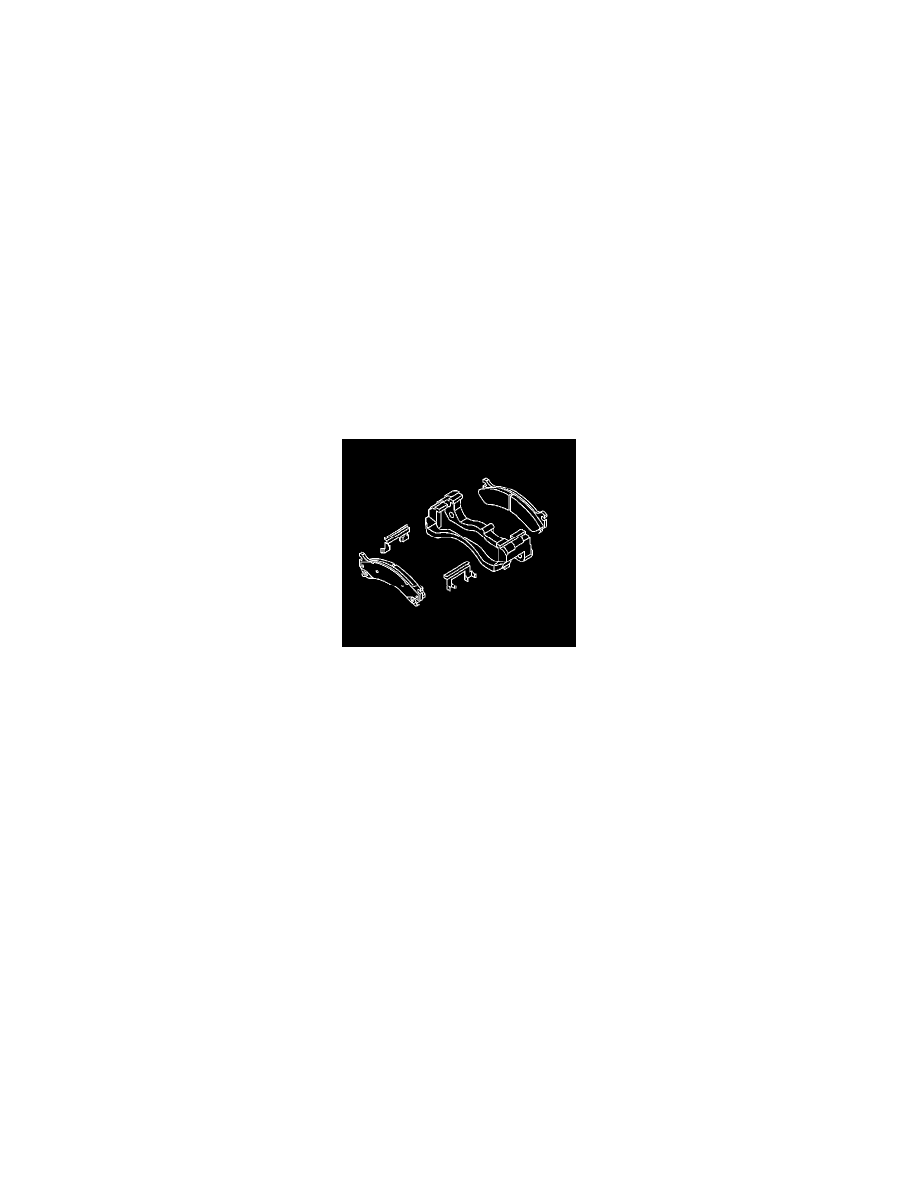Express 3500 V8-6.0L (2010)

1. Inspect the fluid level in the brake master cylinder reservoir.
2. If the brake fluid level is midway between the maximum-full point and the minimum allowable level, no brake fluid needs to be removed from the
reservoir before proceeding.
3. If the brake fluid level is higher than midway between the maximum-full point and the minimum allowable level, remove brake fluid to the
midway point before proceeding.
4. Raise and support the vehicle. Refer to Lifting and Jacking the Vehicle (See: Maintenance/Vehicle Lifting/Service and Repair).
5. Remove the tire and wheel assembly. Refer to Tire and Wheel Removal and Installation (See: Maintenance/Wheels and Tires/Service and Repair
).
6. Inspect the caliper operation. Refer to Brake Caliper Inspection (See: Brake Caliper/Testing and Inspection).
Caution: Support the brake caliper with heavy mechanic wire, or equivalent, whenever it is separated from its mount and the hydraulic flexible
brake hose is still connected. Failure to support the caliper in this manner will cause the flexible brake hose to bear the weight of the caliper, which
may cause damage to the brake hose and in turn may cause a brake fluid leak.
7. Remove the caliper from the mounting bracket and support the caliper with heavy mechanic wire or equivalent. DO NOT disconnect the hydraulic
brake flexible hose from the caliper. Refer to Front Brake Caliper Replacement (JH5) (See: Brake Caliper/Service and Repair/Removal and
Replacement/Front Brake Caliper Replacement (JH5)) Front Brake Caliper Replacement (JH6, JH9) (See: Brake Caliper/Service and
Repair/Removal and Replacement/Front Brake Caliper Replacement (JH6, JH9)).
8. Remove the brake pads from the caliper mounting bracket.
9. Remove and discard the anti-rattle clips from the brake caliper mounting bracket.
10. Inspect the caliper and mounting bracket. Refer to Brake Caliper Inspection (See: Brake Caliper/Testing and Inspection).
Installation Procedure
1. Install new anti-rattle clips to the inside ends of the caliper mounting bracket.
2. Install the brake pads to the caliper mounting bracket.
3. Place the new pads in the same orientation as noted during removal.
4. Install the brake caliper. Refer to Front Brake Caliper Replacement (JH5) (See: Brake Caliper/Service and Repair/Removal and
Replacement/Front Brake Caliper Replacement (JH5)) Front Brake Caliper Replacement (JH6, JH9) (See: Brake Caliper/Service and
Repair/Removal and Replacement/Front Brake Caliper Replacement (JH6, JH9)).
5. Install the tire and wheel assembly. Refer to Tire and Wheel Removal and Installation (See: Maintenance/Wheels and Tires/Service and Repair).
6. Remove the safety stands.
7. Lower the vehicle.
8. With the engine OFF, gradually apply the brake pedal to approximately 2/3 of its travel distance.
9. Slowly release the brake pedal.
10. Wait 15 seconds, then repeat steps 8-9 until a firm pedal is obtained. This will properly seat the brake caliper pistons and brake pads.
11. Fill the master cylinder reservoir to the proper level with clean brake fluid. Refer to Master Cylinder Reservoir Filling (See: Hydraulic
System/Brake Master Cylinder/Service and Repair/Procedures/Master Cylinder Reservoir Filling).
12. Burnish the brake pads and rotors. Refer to Brake Pad and Rotor Burnishing (See: Procedures).
Rear Disc Brake Pads Replacement (JH5, JH6)
Rear Disc Brake Pads Replacement (JH5, JH6)
Removal Procedure
Warning: Refer to Brake Dust Warning (See: Service Precautions/Technician Safety Information/Brake Dust Warning).
Caution: Refer to Brake Fluid Effects on Paint and Electrical Components Caution (See: Service Precautions/Vehicle Damage Warnings/Brake Fluid
Effects on Paint and Electrical Components Caution).
